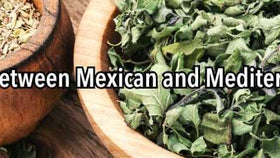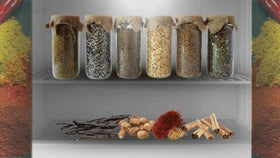What Is Urfa Biber?
Why The Smokey Turkish Pepper, Urfa Biber, Deserves a Spot in Your Spice Rack
Peppers are cultivated and celebrated on nearly every continent, with thousands of varieties each boasting their own heat levels and unique flavor profiles. Shows like Superhot: The Spicy World of Pepper People and the YouTube sensation Hot Ones have pushed Scoville scores into the spotlight, elevating the hottest peppers to near-celebrity status. But there’s far more to the world of capsicum than just eye-watering, sinus-clearing heat.
One pepper that proves this point beautifully is Urfa Biber, also known as the Isot Pepper. It may rank low on the Scoville scale, but its layered flavor is immeasurable and unlike anything else in your spice cabinet. With smokiness, sweetness, and a rich, earthy depth, Urfa Biber reminds us that intensity isn’t just about heat; it’s about complexity. This spectacular chile flake deserves attention not for what it burns, but for what it builds.
Where Does Urfa Biber Come From and How is it Produced?
The Isot Pepper hails from Turkey, with its roots in Sanliurfa, or Southeastern Turkey, which is why it is known as the Urfa (Sanliurfa) Biber (Pepper). As expected, Urfa Biber is prized in traditional Turkish and Kurdish cuisine—think kebabs and the popular tomato/pepperrelish, ezme—but it is also gaining popularity through YouTube and TikTok trends like whipped feta dips (keep reading for a recipe that melds classic meze with the trending whip).
Urfa Biber’s unique flavor can’t be solely attributed to the capsicum variety from which it’s grown. Much like ancho (the dried poblano) and chipotles (smoked, dried jalapeños), Urfa Biber is defined as much by its post-harvest process as by the pepper itself. After sun ripening on the plant, Capsicum annuum peppers are harvested, sun-dried during the day, then wrapped in cloth or plastic sheets at night to “sweat” as a means of retaining their oils. They are then crushed and cured for market by further drying to concentrate the flavors.
What Does Urfa Biber Taste Like?
The slow fermentation process used to prepare Isot Peppers for market softens the dried pepper and concentrates its natural sugars, infusing it with a smoky, almost molasses-like depth. The result is a soft, oil-rich flake with a deep burgundy hue and a flavor that’s sweet and earthy, with just a slight touch of heat. These flakes impart a flavor onto dishes that is often distinguished as having elements of chocolate, tobacco, and raisins or plums.
How to Use Urfa Biber
With its depth of flavor and gentle heat, Urfa Biber complements a wide range of dishes; so by all means, let your culinary imagination run wild. But if you’re looking for a starting point, here are a few ideas to help you get acquainted with the magic of the Isot Pepper:
- Use Urfa Biber to Finish Dishes - Sprinkle over eggs, tomato caprese, avocado toast, grilled shrimp, or roasted veggies.
- Blend into dips, like hummus, guacamole, tzatziki, or even to add a twist to a simple ranch dip.
- Rub on meat and seafood or toss over veggies before placing them on a grill or in the oven.
- Add a touch to chocolatey desserts like fudgy brownies or truffles.
- Mix with sea salt and use for rimming a smoky margarita or bloody mary.
-
Use it in classic Turkish recipes like kebabs or ezme.
A Remarkable Recipe Using Urfa Biber: Ezme Served over Whipped Feta
Ingredients
For the Whipped Feta with Isot Pepper:
- 1 7-ounce brick of sheep-milk Feta
- 3 ounces of cream cheese
- 1 tablespoon Urfa Biber Flakes
- 2 teaspoons lemon juice
- 3 tablespoons olive oil
For the Ezme:
- 1 bunch parsley
- 1 tablespoon of chopped fresh mint leaves
- 2 large tomatoes, seeds removed
- 2 large green bell peppers, seeds removed, roughly chopped
- ½ teaspoon Aleppo pepper powder
- 1 tablespoon Urfa Biber flakes
- 1 teaspoon Sumac powder
- 1 small yellow onion, roughly chopped
- 3 tablespoons tomato paste
- 1 teaspoon apple cider vinegar
- 4 cloves of garlic
- 1 tablespoon molasses (pomegranate is the preferred traditional variety for this recipe)
- 3 tablespoons olive oil
- Salt and pepper to taste
Procedure
For the Whipped Feta with Isot Pepper:
- In a small bowl, combine 1 tablespoon of Urfa Biber flakes with the olive oil. Let it soak for at least 20 minutes to soften and infuse.
- Crumble the feta, lemon juice, and cream cheese into a food processor. Pulse to blend.
- Add the soaked Urfa Biber and oil mixture to the feta.
- Blend until smooth and creamy, scraping down the sides as needed. If the mixture is too thick, drizzle in a bit more olive oil to loosen.
-
Transfer to a shallow serving bowl and smooth using the back of a spoon. Set aside or refrigerate until ready for use.
For the Ezme:
- Add tomatoes, bell peppers, onion, parsley, mint, and garlic to a food processor and pulse until roughly minced—but not pureed. You want a rustic texture.
- Transfer the mixture to a bowl.
- Stir together tomato paste, molasses, apple cider vinegar, olive oil, Urfa Biber, Aleppo pepper, sumac, salt, and pepper until the tomato paste is well incorporated.
- Combine the two mixtures well and taste; adjust seasoning as needed. For more heat, add a touch of Aleppo pepper. For more umami flavor, add more Isot pepper.
-
Let the Ezme sit for 15–20 minutes or longer to allow flavors to deepen.
To Serve
- Spoon the Ezme generously over the whipped feta or place them in two separate dishes.
- Finish with a drizzle of olive oil and a pinch of Urfa Biber or sumac (or both).
- Serve with warm flatbread, pita chips, or fresh veggies.







Slofoodgroup
Auteur